It’s easy to stereotype the German gastro scene as all oompah bands, gargantuan beer steins, and buxom waitresses wearing dirndls.
There’s nothing wrong with that broad brushstroke, and during Oktoberfest in Munich it’s spot on.
But there’s more to the country than the Bavarian standard of pale brews and a wooden slab of sausages with mustard and rye bread (not to mention wiener schnitzel, which is actually named after the capital of Austria).
Nowadays, the German bars and restaurants that have proliferated around the world come in many forms.
Sure, some are in traditional timber-clad beer halls with liter-sized steins lining the walls and waiters in lederhosen.
But others are modern spaces punctuated by polished concrete, or even beachfront shacks shaded by palm trees.
No matter what form they take, the common denominator for the best German bars – besides beer, wurst and sauerkraut – is a sense of what’s called “gastfreundschaft,” says Marco Santomauro, the general manager of New York City’s Paulaner Brauhaus.
The Munich brewery licenses more than 30 locations around the world, including 22 in China and six in Russia.
“This one word describes a feeling as well as a place,” says Santomauro, who was born in Munich and worked for the brewery for 23 years.
“It’s cozy, homey, but also means being surrounded by good people that you like. Every place tries to achieve this welcoming feel.”
Given the thousands of German bars and restaurants worldwide, the dozen that follow barely scratch the surface. But any of them would satisfy globetrotters with a hankering for a cold beer, a hearty meal and a warm welcome.
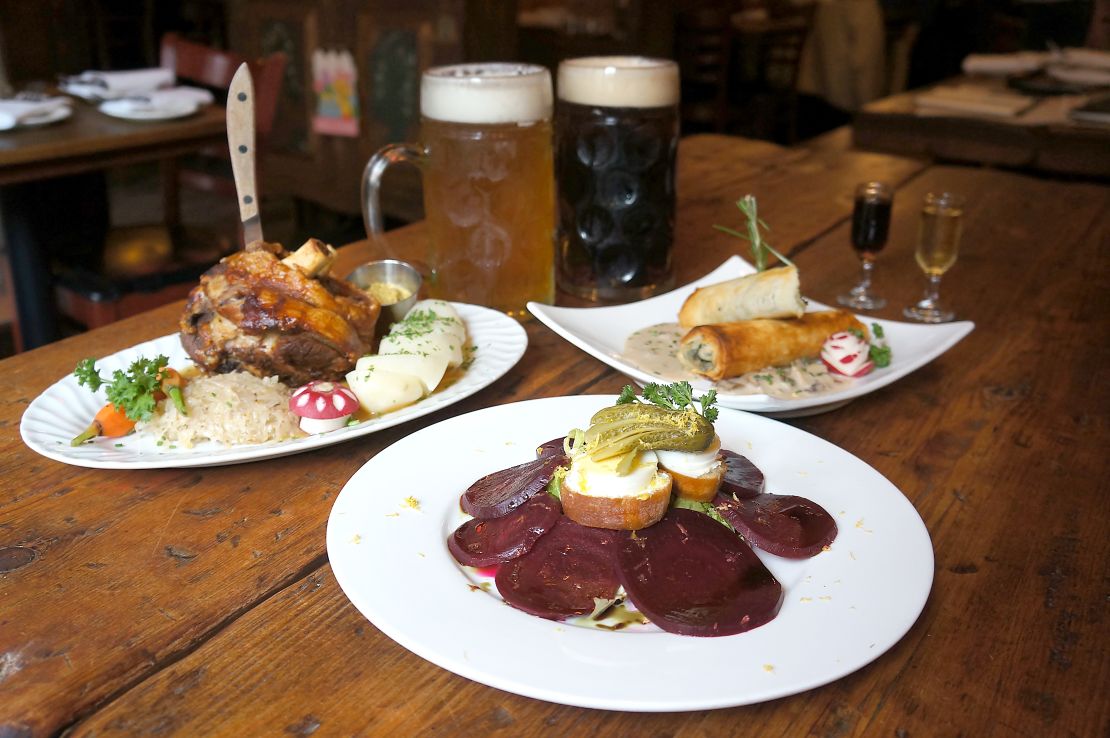
Bar Lagoa, Rio de Janeiro, Brazil
With about 12 million citizens of German heritage, Brazil has the second largest link back to the mother country in the world, behind the United States. There are even some cities in the south where German is considered a co-official language of Portuguese.
But the life of the party, naturally, is Rio de Janeiro, which at one time had more than a dozen German bars.
One of the most famous, Bar Lagoa, was once called Bar Berlin after the German capital until it was changed during World War II.
The simplicity of the restaurant has remained, and now waiters in white jackets and black ties are known for being efficiently straightforward. Impress your travel buddies by ordering your draft beer with the Portuguese word “chope,” pronounced “shop-ee.”
Bar Lagoa, Avenida Epitácio Pessoa 1674, Ipanema; +55 21 2523 1135
Zum Franziskaner, Stockholm, Sweden
Stockholm’s entry has the distinction of being one of the oldest bars in the world. Founded by German monks in 1421, Zum Franziskaner moved to its current location in 1622, though the building has been redeveloped twice since then. It’s such an institution that locals simply refer to it as “Zum.”
Tradition reigns in both the cuisine and the cozy decor. The restaurant gives off a hunting lodge feel, with an arched ceiling, warm lighting and dark wood paneling.
German and Austrian beers rule, and the food is a mix of German sausages and Swedish specialties like venison with lingonberries, fennel and goat cheese.
Zum Franziskaner, Skeppsbron 44, 111 30 Stockholm, Sweden; +46 8 411 83 30
Siggi’s German Restaurant, Salt Rock, South Africa
Just a stone’s throw from the southern Indian Ocean, Siggi’s feels more Jamaican beach shack than Munich beer hall. But the food comes from all over the German map thanks to two transplants, both named Chris, who opened here in 2008.
You can start with pickled herring with apple dressing, followed by an entree of veal schnitzel with spaetzle and paprika sauce, finished off with Black Forest cake, and washed down with a Bitburger, Erdinger, Paulaner, or one of 10 other German and Belgian imports.
The remote restaurant doubles for locals and tourists as a family-friendly venue and lively pub, with a play area for kids during the day and a fun crowd at night.
Siggi’s German Restaurant, Basil Hulett Drive, Umhlali Beach, Dolphin Coast, 4420, South Africa; +27 032 525 7460
Bauhaus, Vancouver, Canada
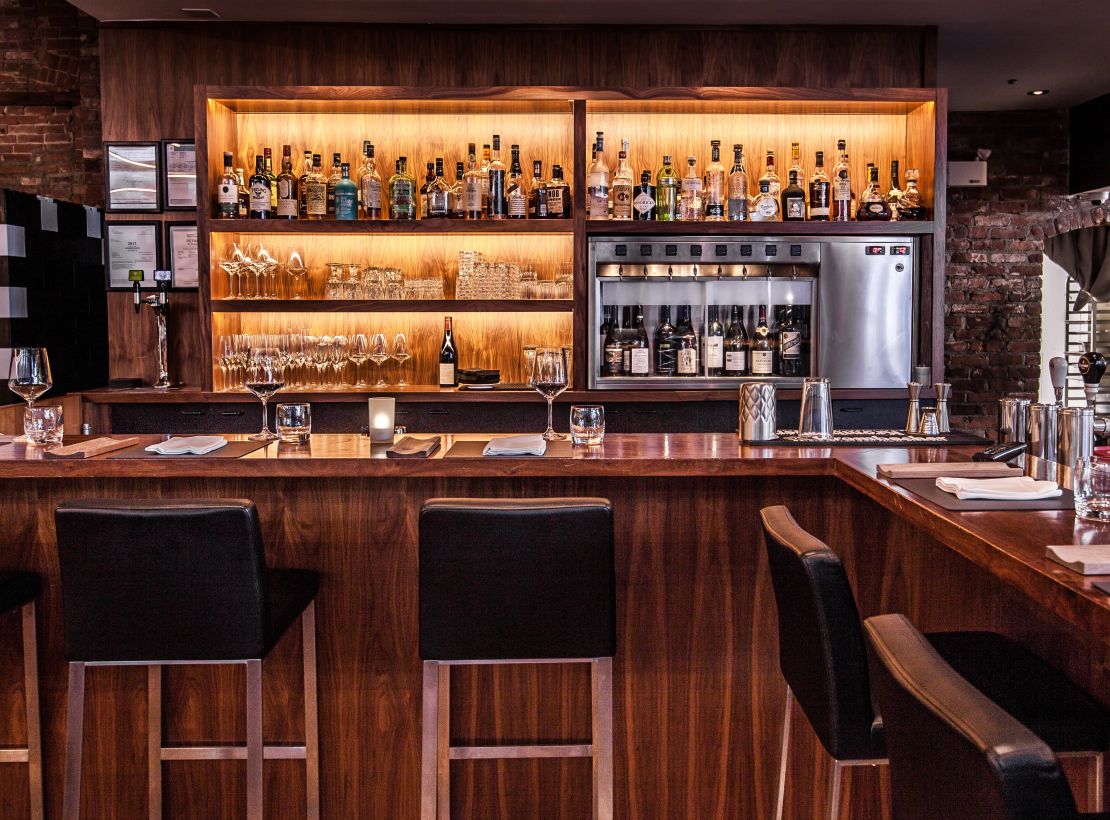
Bauhaus, located in the city’s historic Gastown district, is proof that the German culinary tradition can go beyond sauerkraut and schnitzel.
The sleek restaurant, opened in 2015 by former film director Uwe Boll, is housed in a former bank building after a $10 million renovation that adhered to minimalistic principles. Hence, its name – a play on the German art school movement and the word for “brewhouse.”
The kitchen turns out fine-dining takes on classic dishes like veal stroganoff, but also offers pickled cucumbers with cured herring and roasted quail with peaches, chanterelle mushrooms and chickpeas.
There’s also a focus on the wide range of German wines, which contrary to popular belief, are not all sweet.
Bauhaus, 1 W Cordova St, Vancouver, BC V6B 2J2; +1 604-974-1147
Helmut’s, La Cumbrecita, Argentina
In 1934 a German transplant to Buenos Aires bought 500 hectares of bare landscape near Córdoba and recreated a Bavarian mountain town with the help of his extended family.
They built roads and alpine-style chalets and planted thousands of spruces and pine trees, uncommon in that part of Argentina.
Now about 300,000 tourists come each year for the log-cabin spa and waterfall hikes.
Helmut Cabjolsky’s granddaughter still runs his namesake restaurant in one of the town’s first buildings.
Black Forest cake is among the highlights, although much of the menu and the wines will remind you just what country you’re in. The Edelweiss cafe around the corner serves delicious cheesecake.
Helmut’s, Calle pública la Cumbrecita, Córdoba 5194, Argentina; +54 (03546) 481 189
Brauhaus Schmitz, Philadelphia, Pa.
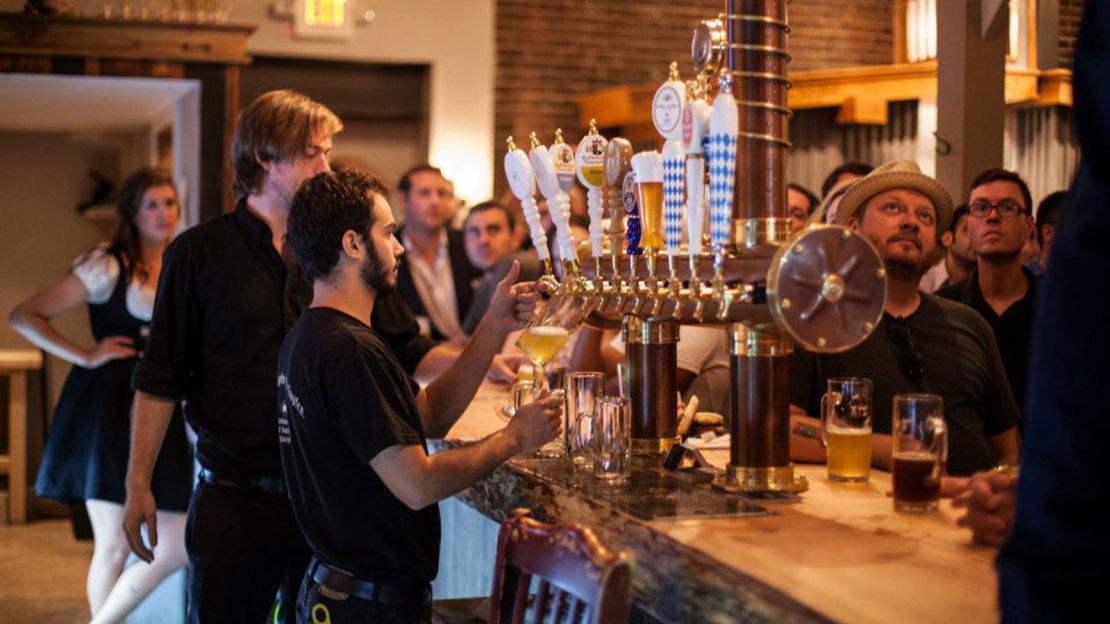
This eight-year-old restaurant brought the craft beer boom to the beer hall, creating one of the most impressive German draft programs in the country.
Behind the long bar, customers will find 30 German beers on tap and another 50 in bottles, including some that had never before been available in the United States.
The restaurant takes the lead for all the city’s Germany-related festivals, closing its block for both Oktoberfest and Maifest in the spring.
Last fall it expanded the party to a former armory that welcomed 5,000 revelers. Day to day, though, customers come back for a menu that embraces tradition but changes with the seasons.
Brauhaus Schmitz, 718 South St., Philadelphia, PA 19147; +1 267-909-8814
Katzenjammers, London
A few hundred revelers can pack into the rowdy Katzenjammers, which echoes with the clinking of raised glasses and oompah music – and sometimes a boisterous rendition of “Sweet Caroline,” which for some reason is a popular singalong during Munich’s Oktoberfest.
Under barrel-vaulted ceilings, waiters in lederhosen serve platters of pretzels, wursts and a couple of roasts, but most people come for the music and beer.
Six German brews are on tap and more than 20 more in bottles of pilsners, kolsches, dark lagers, weissbiers and dunkels. As they say on their website, “upstairs is for drinking, downstairs is for dancing.” Another plus is the location, stumbling distance from the London Bridge subway station.
Katzenjammers, 24 Southwark Street, London SE1 1TY; +44 07771 363 542
German Tourist Club, Mill Valley, California
A 100-year-old alpine lodge in the middle of the Muir Woods greets the hikers who can find it just north of San Francisco.
A branch of the Austria-founded Nature Friends Tourist Club, the lodge allows non-members to visit during festivals and on limited guest days. They’re announced on the website, which lists GPS coordinates for its location rather than an address.
Hikers who come for an afternoon respite of hiking the Dipsea, Sun and Redwood trails will find expansive views to the west.
Besides beer and wine, they usually only have light snacks such as chips and cured sausage sticks available, but you can bring your own sandwich to enjoy at the outdoor picnic tables. Be aware it’s cash only, and there’s no ATM for miles.
German Tourist Club, 37° 53’ 54.58” N, 122° 34’ 12.12” W; +1 415-388-9987
Ya Udah Bistro, Jakarta, Indonesia
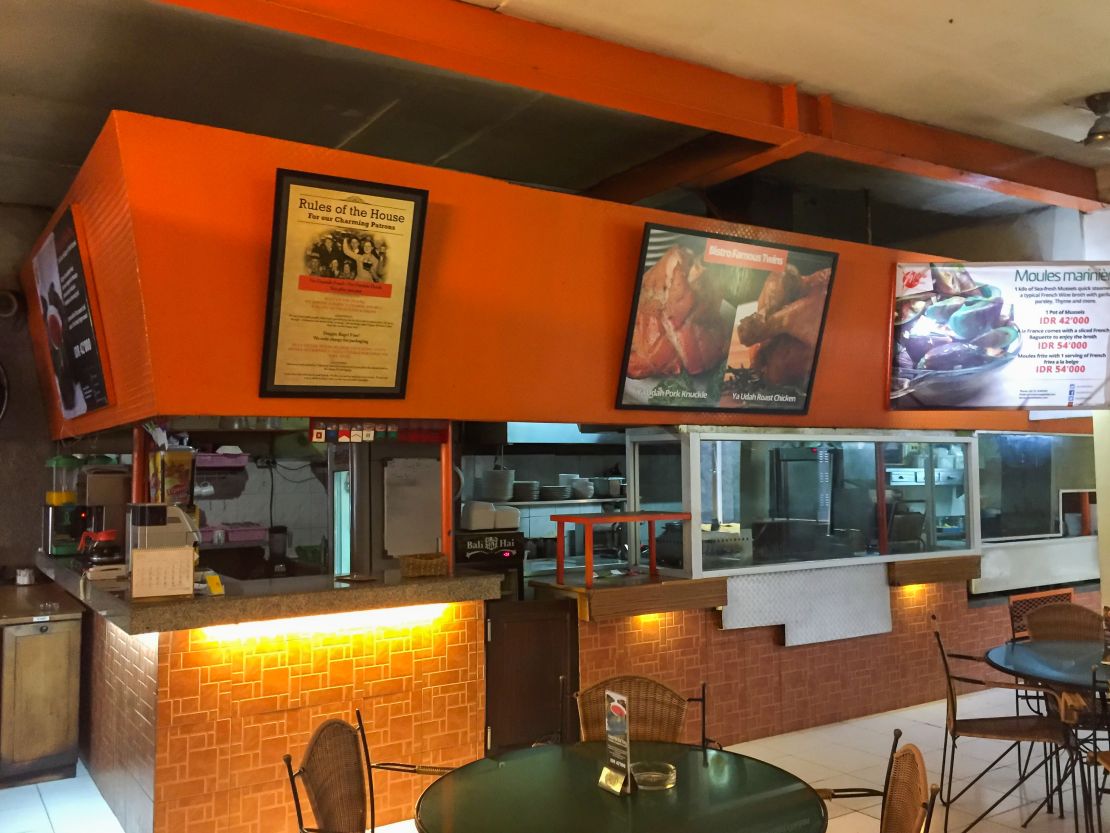
The world’s largest Muslim-populated nation happens to have a German restaurant known for a gigantic hunk of pork. Ya Udah, roughly translated to “alright” in Indonesian, has been serving a four-pound grilled pork knuckle since 2001.
But strict adherence to German tradition isn’t exactly the idea; its voluminous menu lists spaghetti with meat sauce and black pepper stir-fry among the dozens of sausages, roasted meat and cabbage dishes.
That irreverence doesn’t prevent the restaurant from being incredibly popular, and it translates to a politically incorrect vibe that plays out in the orange and yellow space. Case in point, its smoking policy: “For smokers, we salute you: SMOKE! For non-smokers, please: NON-SMOKE!”
Ya Udah Bistro, Jl. Johar 15, Menteng, Jakarta 10350; +62 21 3140343
Old Heidelberg, Helen, Georgia, USA
Tucked in a corner of northeast Georgia not far from the end of the Appalachian Trail, the former logging village of Helen had been declining for years when the town decided to remake itself in the style of an alpine village in the 1960s.
Thinking the move would attract tourists, they decreed an Old-German look for all the buildings in town. It wasn’t until Old Heidelberg opened in 1975 that any restaurant there served German food, but now even the chain restaurants sling burgers from half-timbered houses with gingerbread trim.
Old Heidelberg sits on Main Street at the center of the tiny town’s kitschy glory, surrounded by forested hills a couple hours’ drive from Atlanta. It’s a solid option for schnitzel and sausages with an expansive beer garden out front.
Old Heidelberg, 8660 N Main St. Helen, GA 30545; +1 706-878-0061
Munich Brauhaus, Melbourne, Australia
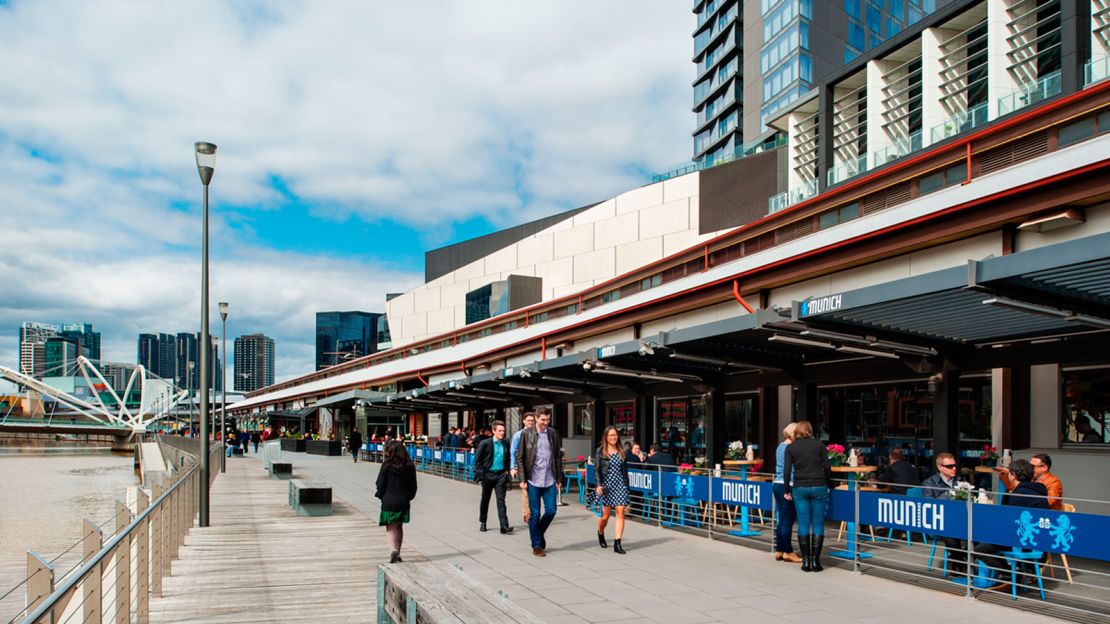
This lively spot embraces a few traditional elements, such as antler-like wooden chandeliers hanging over the long tables, but otherwise the atmosphere leans towards the modern rather than the stereotype.
The bright, cavernous space overlooking the Yarra River waterfront can fit hundreds of people. They come for live oompah music every night, copious amounts of beer and even an eating contest of a 1-kilo schnitzel. Current record for the Schnitzlmeister hall of fame is seven minutes, 27 seconds.
As it says with a wink on its website, what happens in Munich stays in Munich. There’s also a location in Sydney’s Central Business District.
Munich Brauhaus, 45 South Wharf Promenade, South Wharf, Melbourne, Australia 3006; +61 1300 686 424
Heidelberg, New York
The second place named Heidelberg on this list couldn’t have a more different location than the first. But this Upper East Side classic also comes with all the trappings of what most people would expect from one of the oldest German restaurants in the United States – huge hunks of pork, crispy schnitzels, crunchy potato pancakes and bountiful platters of six kinds of sausages.
The recipes haven’t changed since it opened in 1936, when Yorkville was an immigrant enclave with a main drag that people called “Goulash Avenue.” It’s the only one of at least 10 eateries that remain from that time.
The place clearly has a multi-generational appeal for fans who praise the restaurant’s authenticity.
Further downtown, the beer garden Loreley (around the corner from Paulener Brauhaus) offers a German menu that’s a little more refined with influences from Cologne – but they also do Taco Tuesdays.
Heidelberg, 1648 Second Avenue, New York, 10028; +1 212 628-2332
Loreley, 7 Rivington St, New York, New York 10002; +1 212 253-7077
Bernd’s Bar, Tokyo, Japan
Fresh pretzels might already be on the table when you sit down at this outpost among the hopping nightlife of Tokyo’s Roppongi district. Owner Bernd Haag has packed the joint with knickknacks, framed soccer jerseys and dusty photos of his family and various German celebrities.
He’s known to take the concept of “gastfreundschaft” pretty seriously, chatting with regulars in English, German, Spanish and Japanese. Locals say he’s half the reason people keep coming back.
Of course, they also return to wash the stick-to-your ribs food down with a standard selection of German beers on tap.
Bernd’s Bar, Roppongi 5-18-1, Minato-ku, Tokyo, Japan; +81 3-5563-9232
Based on this list and the other favorites that surely have been left of it, it’s clear that the recipe for an “authentic” experience doesn’t have to include a raucous 10-piece band and a mountain of sauerkraut — but sometimes it does.
And no matter where you are around the world, the appeal of the German bar is universal, says Ursula Heinzelmann, author of “Beyond Bratwurst: A History of German Food.”
“Who does not like beer? In combination with Oktoberfest, it’s such an easy concept to grasp,” said Heinzelmann, who blogs at heinzelcheese.de. “Beer, fried meat, music and fun. It’s nothing complicated.”
Albert Stumm is a freelance travel and food writer based in Barcelona. You can find him on Instagram and Twitter @albertstumm.










